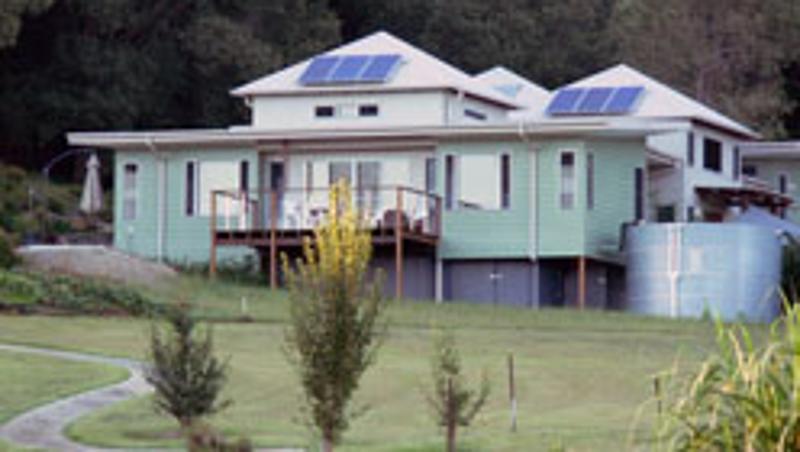
Clever, inexpensive design can cut the energy used in new homes by up to 80 per cent, says a Queensland University of Technology (QUT) researcher.
QUT science and engineering researcher Wendy Miller, from the Science and Engineering Faculty, has completed a PhD on sustainable housing, tracking the development of homes at The Ecovillage in Currumbin, and is monitoring the design, construction and liveability of various environmentally-friendly houses in South East Queensland and Townsville.
Ms Miller found good design, solar hot water and energy efficient appliances in houses can reduce energy consumption by 50-80 per cent compared to the average Queensland household.
She said the key to reducing a home's carbon footprint was to build a home that was naturally comfortable to live in, eliminating the need for air conditioning.
"The study found the best houses in The Ecovillage used 80 per cent less energy, while the average electricity consumption of Ecovillage houses was less than 50 per cent of the average home in Queensland," Ms Miller said.
"These houses were built under guidelines which specified they use natural breezes, energy efficient appliances, solar power, solar hot water and no air conditioning."
Ms Miller said these same results were possible in regular housing estates, providing the land was used well.
"Good architecture is essential, but green houses are also dependent on good urban planning," she said.
"Housing estates need to be carved up to accommodate environmentally friendly architecture, allowing for as many north facing blocks as possible.
"Also, it is important that the house doesn't take up the whole of the block. Keeping the house to 50 per cent or less of the block size allows for breezes, shady trees and gardens that help to keep the house cool in summer."
Ms Miller followed a number of Ecovillage families over three years through the process of design, construction and occupation. The houses had monitoring equipment installed to track the use of lighting, power, solar energy, hot water, rainwater and recycled water.
"It is most important to get the house design right first, then to add solar hot water, energy efficient appliances and light bulbs, because once you have these thing, your electricity use is very low, and you don't need as many solar panels to meet your needs," she said.
"An environmentally friendly home needn't cost more to build, or could even be cheaper to build, with good planning, and architects and builders who are familiar with building green houses. And they are cheaper to run since they use much less electricity."
Related stories:
Feed the world, cut greenhouse gases: QUT expert
Eco community designs win prize
Learning sustainability from birth
Media contacts:
- Rachael Wilson, QUT media unit, 07 3138 9449 or media@qut.edu.au (Wed/Thu)
- Rose Trapnell, team leader, QUT media unit, 073138 2361, rose.trapnell@qut.edu.au




